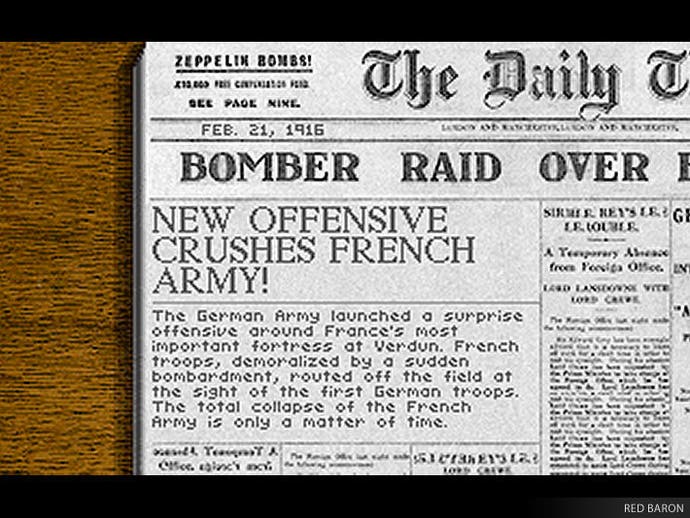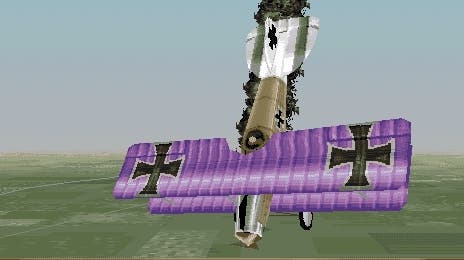Where have all the World War 1 and 2 flight sims gone?
Wings of desire.
As someone who lives and breathes games a bit more than most, it's refreshing to talk to friends who have only a passing interest in the subject. Sometimes, it leads to a revelation that just didn't occur to me before. Like, what happened to World War 1 and World War 2 flight sims? A few years back - okay, a fair few years back - they used to be everywhere, as a good friend pointed out to me one evening when we were talking about games from our youth. He had fond memories of such games and I, well, I'd completely forgotten they'd even existed because I'd moved onto other genres. There's always that rush to move into the next big thing, isn't there? As I thought of my enjoyable experiences, however, the memories came flooding back. And my friend has a good point. They were very good, so what on earth happened to them?
The early 90s are what I would consider to be their heyday. While perhaps not as ubiquitous as more traditional gaming fodder, I can remember peering at various flight sim game boxes in my local Smiths alongside my dad. A history buff and former soldier, Dad loved the idea of flying planes in war-time scenarios and blowing stuff up. In a purely fictional sense, of course. Except, he really wasn't very good at games so it came down to me to do the 'hard' work while he directed and watched me negotiate whatever I happened to be tackling.
Red Baron was one of the most iconic games of the time. Given a choice of flying for the German Air Service or the Royal Flying Corps, you'd invariably find yourself opting to go the German route just so you could fly in Manfred Albrecht Freiherr von Richthofen's squadron - otherwise known as the Red Baron. Sounds rather cool, doesn't it? Not that we should be glorifying war, but we'll skim past that for a moment.

Red Baron featured plenty of examples of the real aircraft used during World War 1, including the Fokker, Eindecker, and Sopwith Camel. Maybe I had an unorthodox childhood but these really were household names for me back then, courtesy of Dad. Fancy physics weren't really utilised here. Instead, this was clearly a game designed for arcade-style fun. The Forza of flight games, if you will. Ideal for a kid keen to mess about in the air, while still requiring a bit of a dab hand with the controls.
Numerous different missions were available, from dogfighting to patrolling key locations, balloon-busting, or simply escorting bombers to their targets. Some of this might sound tedious but it was a well-paced game that kept the action flowing while also promising a steady amount of tension too. There was a great sense of satisfaction as you chased something down, lining up your shot quickly and hoping for the best. Unlike modern flight sim/shooters, it's not like you could rely on heat-seeking missiles to win through. It was all down to your own individual targeting skill.
A selection of historic missions lured you in for more, especially if you loved history. There was a rather clever timeline too. You'd play your way through various missions linked to the real events that unfolded during that time. If you were wounded in combat, you could miss months recuperating or stuck in a POW camp, depending on where you managed to land. In hindsight, that was a rather clever way of both educating players about the risks, and ensuring that each player had a different experience. Just the mere thought of it leaves you wondering why more recent games haven't embraced this way of thinking, even if there is a risk of missing a significant chunk of game due to injury.
There were many other flight sims of that era too. Games like Knights of the Sky that also threw in some time with the Red Baron - unsurprisingly so, given that its original working title had been Red Baron until the other Red Baron beat it to the announcement. Later still, in 1994, came Dawn Patrol which offered a similar experience with a fancy front-end that had the events of the war unfold like a storybook.

The joy that came from these games was that they were pretty accessible. Far from someone with the patience to deal with a 'proper' simulator, I still enjoyed myself with them. There was the satisfaction of tackling bombing runs or chasing down enemy fighters in dogfights. All this despite that underlying feeling of 'So, this actually happened and now I'm treating it like entertainment?' which always makes such historical games feel ever so slightly inappropriate.
Then, something changed. Perhaps it was down to advances in technology. There was that sudden realisation that such games could be more realistic. There was the arrival of B-17 Flying Fortress, set during World War 2, and a fair bit more finicky to figure out. It had a 230-page manual, after all, and it also came with a keyboard overlay that, honestly, you really needed. Relying on the overlay to tell you exactly what each button did was essential if you stood any chance of not messing up through misunderstanding the controls.
That trend sort of continued with the likes of Microsoft Combat Flight Simulator, another game that gave realism a good shot. The trend towards complexity continued as technology got more advanced with IL-2 Sturmovik proving a particularly successful effort that spawned numerous sequels and add-ons.
It's all great for those that want to spend dozens of hours painstakingly figuring things out, but where did the pick-up-and-play fun go? In the world of racing games, there's room for racing simulators like Assetto Corsa, alongside Gran Turismo and other 'simcades' that bridge the gap, with extra space for more casual racing games like Forza Horizon 4. Why isn't that the case with flight sims any more? There was a brief resurgence with Blazing Angels back in the mid 2000s, followed by the rather patchy Damage Inc a bit later but it's all been rather quiet since.
I have a suspicion that everyone got a bit too caught up with the race for realism and forgot about the fun factor. Not that being realistic can't be fun, of course, but there's that lovely untapped market out there for a bygone era that's just ripe for a resurgence. Sometimes, you just want to mess around in the sky rather than have to worry about learning a new skill. I can't help but feel that's missing in this once rather thrilling genre.
For now, there's always the memories at least. Because, to be very blunt, you can't easily go back to flying games of the early 1990s. You're better off keeping those rose tinted glasses firmly on rather than donning the World War 1 fighter pilot goggles of days gone by. Take my word for it.

